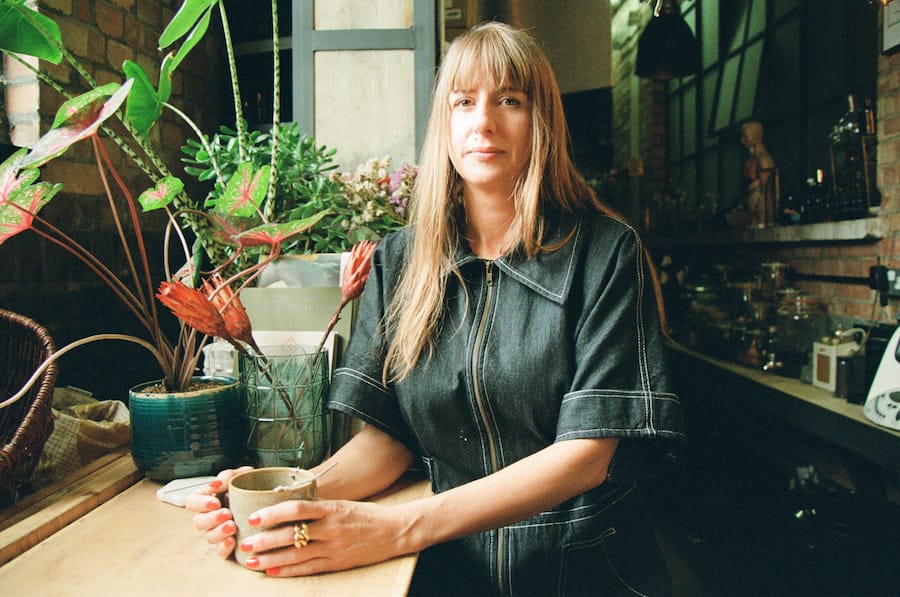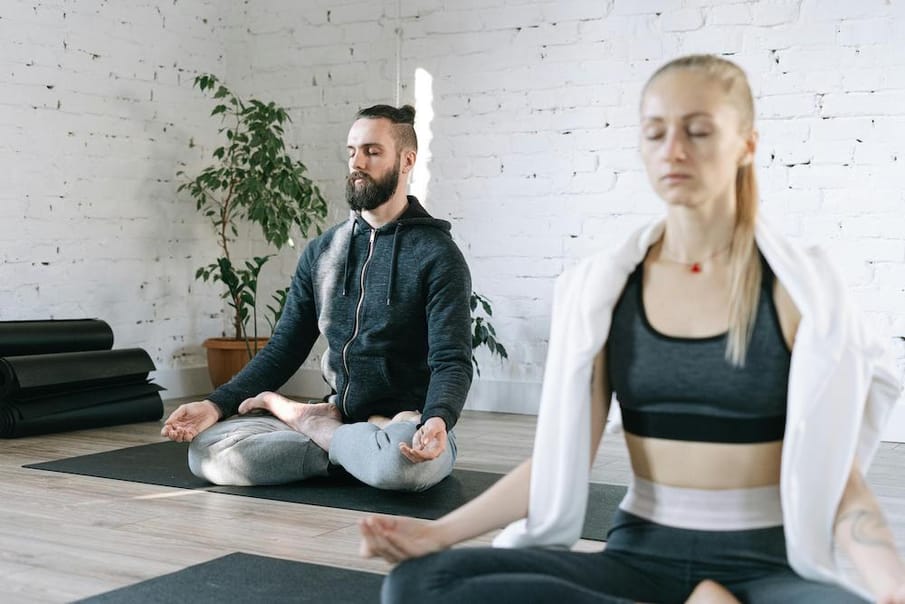Turn over a new wellbeing leaf and discover the power of communing with nature
Recently I bought a test tube terrarium, with a sprig of mosaic plant. Every time I catch sight of its pink veins, my own fizz with contentment. Nature has this powerful effect, making us truly feel alive as we gain a stronger sense of unity with the world around us. So, when I received an invitation to explore plant meditation, as a means to deepen this connection, my curiosity certainly piqued.
What is plant meditation?
When you search ‘plant meditation’ online, an array of results come up (including working with plants in ways not yet legal in the UK), but in essence, it involves incorporating greenery into your meditation or spiritual practice. To learn more about what this could look like, I joined botanical consultant and writer Jemma Foster to try it for myself.
We started with an astrology chart reading which, I admit, I wasn’t expecting. When asked about the connection between astrology and plant work, Jemma explains that everything in nature is connected.
“A rose doesn’t exist in isolation,” Jemma says. “From seed to bloom, it is in conversation with the elements that make up its physical reality – which includes the dance of the planets, the cycle of the seasons, the sun that feeds its light, and the moon that sets its rhythms.”
This link is a thread that weaves throughout Jemma’s work and our session together. After the chart reading, Jemma explains that she meditated on my chart before our consultation, and pulled cards from her astro-botanical card deck. She told me which plants came up for her during this meditation, and what they represent. One of these was the prickly pear cactus, which highlighted a need for boundaries (its external needles protecting an inner water chamber), and was something that immediately resonated with me.
I was then guided through a meditation of my own to explore this recurring theme. First, I visualised myself as a seed growing into a plant, noting how it felt as I did so, before being led to an imaginary theatre. In this space, plants took the stage, representing various people in my life – and I was the director. The aim of this was to safely explore how I could start implementing boundaries. Visualising plants instead of people helped to remove emotion from the experience, giving me a gentle nudge to take action in my real life.

We finished with Jemma offering some herbal remedy recommendations to support me with this, moving forward. For example, I was advised to try bathing with rose and willow, which have astringent properties to help you feel held when setting boundaries. I came away with wide eyes at the depth this work could go to.
What are the benefits of plant meditation?
Sitting with plants in this way, whether they’re in front of us or in our minds, can be powerful. “When we sit with a plant, information is exchanged on multiple levels,” Jemma says. “In the physical realm, plants transform sunlight to give us the energy to survive. We exchange breath through respiration. The electromagnetic field interacts as particles of light (biophotons) and sound (biophonons), and emits a toroidal field of energy – a doughnut-shaped feedback loop – that entrains with others in its environment so we can share information with plants and each other.”
In the emotional realm too, Jemma notes a positive impact, helping to activate our parasympathetic nervous system, reduce stress, and enhance empathy as we connect more deeply with nature. However, she also has a caution, “We need to move away from seeing nature as a wellness tool, and shift the lens from resource to relationship.”
This certainly seems to be a shift that we’re becoming acutely aware of as a society. When given the space, we can see the true scope of how nature can support us – and vice versa – and the value of a reciprocal relationship.
Where to start with plant meditation
If you’re reading this and wondering, ‘OK, but how?’ Jemma shares some exercises to explore:
Plant gazing
-
Sit in front of your chosen plant.
-
Regulate your breathing, relax your eyes, and soften your gaze. Imagine the flow of your exhale meeting the plant, which absorbs the carbon dioxide.
-
In return, inhale to receive the oxygen from the plant. As we inhale, we receive and integrate information from the plant and the cosmic climate that it exists in, and with each exhale, we dissolve ourselves into this shared space of being.
-
When a thought or sensation arises, ask for confirmation by repeating the message back to the plant. Wait for a shift – this is an embodied sense of ‘yes or no’.
-
The more you practise plant gazing, the more you open up new pathways and strengthen your ability to listen and communicate.
Plant immersion
This is about focusing on a specific plant for an extended period of time, and bringing elements of it into your life. For example, a rose immersion might involve drinking rose tea, bathing in rose, applying rose essential oil, drawing or making with rose, and meditating with rose. Immersions are typically for a minimum of three days, but may last weeks.

Dreaming with plants
Dreaming with plants is particularly effective during an immersion, but can be practised at any time, simply by making the invitation to dream with them. Placing plants under your pillow or drinking tea before bed amplifies this intention.
My own experience with plant meditation shone a light on areas in my life I wanted to work on, sowing the seeds for a fresh perspective on how to approach this – perhaps it could do the same for you? It’s clear that when we deepen our relationship to nature, bringing its power and wisdom into our daily life such as through plant meditation, we make space for good things to grow.
Learn more about Jemma and pick up a deck of astro-botanical cards to commune with plants at wildalchemylab.com.


Comments